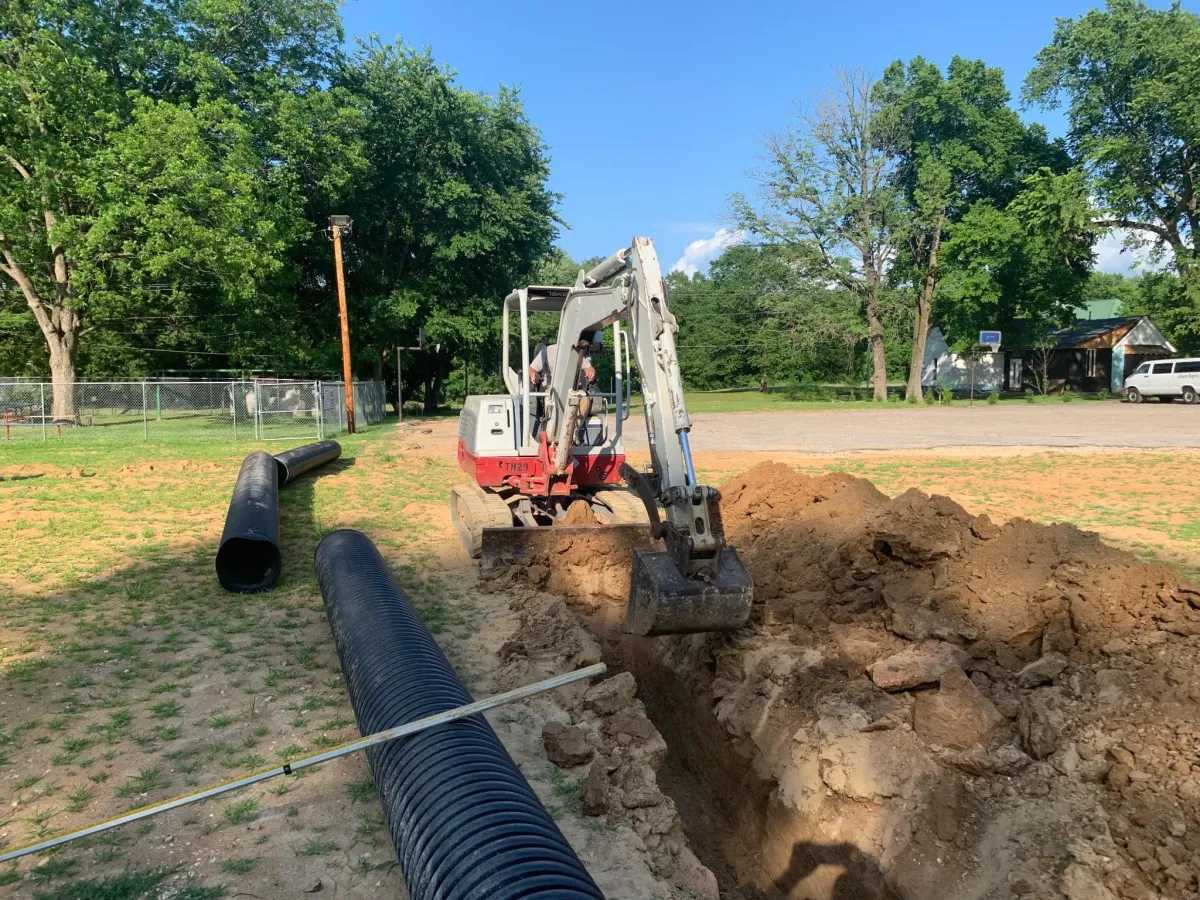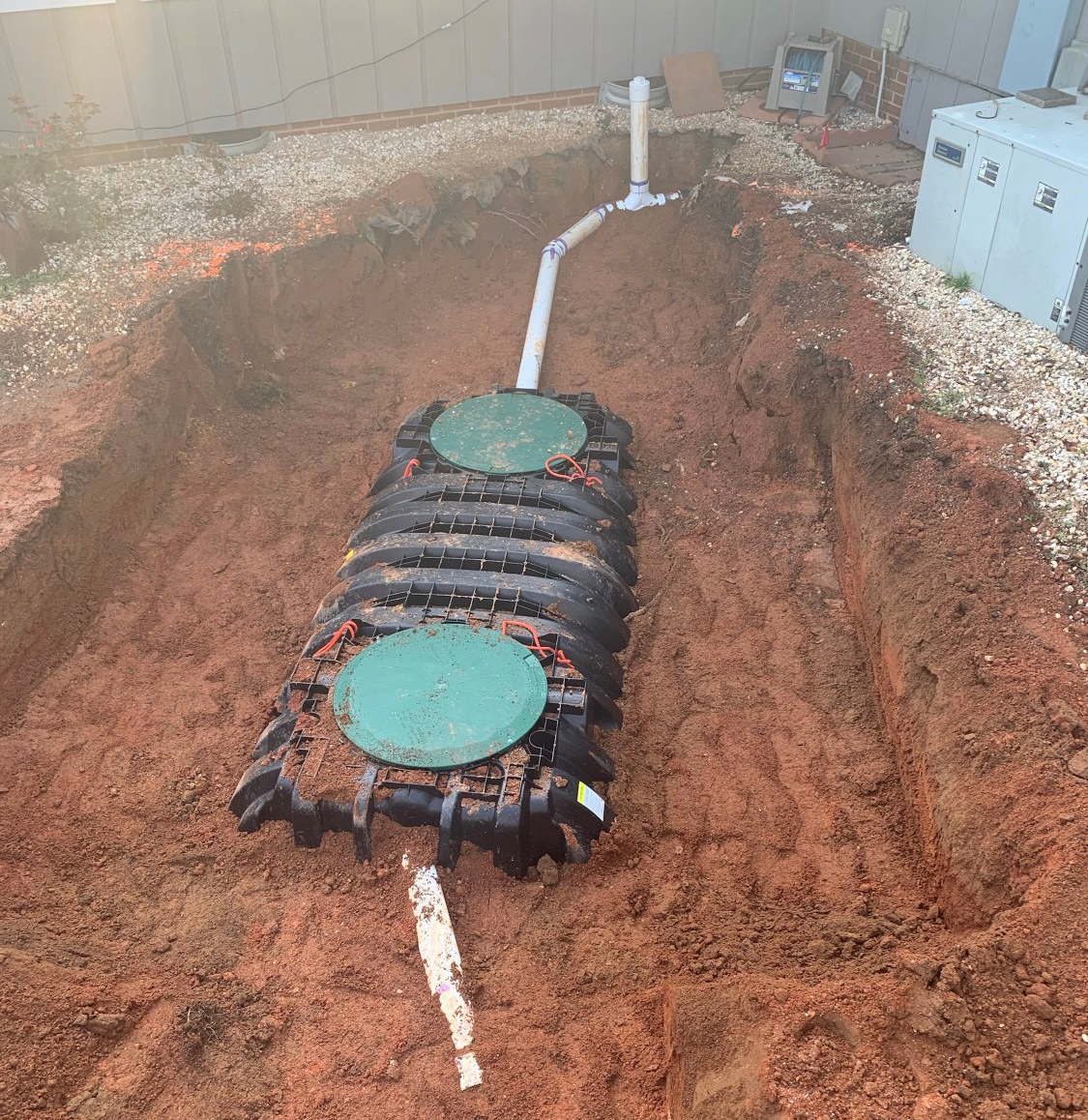
Choosing the Best Septic Installation Company Near Dyer County, Tennessee
Who This Guide Is For: Dyer County Homeowners Planning a Septic Install
If you live on a property without city sewer, a septic system is not a nice-to-have. It is the way your home runs every day. You might be building a new home, replacing a worn-out system, or fixing a failed drain field. Either way, you are looking for straight answers, a fair price, and a crew that treats your land like their own. We wrote this guide for you.
At Innovative Ground Solutions in Rutherford, Tennessee, we serve Gibson, Weakley, Dyer, Crockett, and Obion counties. We are not the biggest firm. We prefer it that way. It lets us slow down, listen, and design to your site, not to a template.

Why Choosing the Right Septic Installer Near Dyer County, Tennessee Matters
A septic system is buried and quiet. When it is done right, you forget about it. When it is done wrong, you live with smells, soggy spots, costly pump-outs, or even a stop-use order. The installer you choose affects:
Whether the system matches your soil, slope, and groundwater.
How long your tank and drain field last.
How often you need service.
What your total cost looks like, from permits to finish grade.
Good installers think about the whole lifecycle. They design for the first flush and for the thousandth. They protect your yard, your well, and your wallet.
How Septic Systems Work in West Tennessee Soil
A standard system has three main parts:
The tank holds wastewater long enough for solids to settle.
The outlet filter stops large particles from leaving the tank.
The drain field spreads partially treated water through soil, where natural bacteria finish the job.
In West Tennessee, clay layers can slow percolation. Some areas have seasonal high water tables. That is why a quick look from a truck window does not cut it. Matching the system to the soil is the difference between dry grass and a muddy mess.
Septic Installation Near Dyer County: Permits, Codes, and Local Inspections
Every county in our service area follows state rules, plus local steps. A solid installer will:
Pull the right permits.
Schedule and attend inspections.
Provide as-built drawings and maintenance guidance.
If a contractor tells you permits are optional, walk away. Permits protect you when you sell and protect your family from health risks.
Soil Testing and Percolation: The First Non-Negotiable Step
Before anyone talks tank size or trench length, you need a soil evaluation.
Soil borings or pits reveal layers, texture, and depth to limiting features.
Percolation tests show how fast water moves through your soil.
Seasonal water table checks help set the elevation of the drain field.
No test, no design. No design, no price you can trust. Skipping this step is how projects go over budget and systems fail early.
System Types Compared: Conventional vs. Aerobic vs. Chamber vs. Mound
Different soils call for different systems:
Conventional gravel trench: Simple, cost-effective in soils with good perc.
Chamber systems: Plastic chambers replace gravel. Helpful where gravel access is limited or you want faster install with clean materials.
Aerobic treatment units (ATUs): Add oxygen to boost treatment. Good for small lots, sensitive sites, or stricter effluent needs.
Mound or raised bed: Used where soils are shallow or water table is high. Requires careful design and clean sand.
The “best” system is the one that fits your site, your county rules, and your future plans for the property.
Septic Installation Cost in Dyer County: Full Breakdown and What Drives Price
Costs vary, but here is what usually drives your final number:
Soil and system type: Conventional is often less than aerobic or mound.
Tank size: Based on bedroom count and local code.
Site access: Tight gates, trees to protect, or long pipe runs increase labor.
Rock and root conditions: Hard digging adds machine time.
Pumps and controls: Pressure-dosed systems or ATUs add equipment.
Permits and inspections: Required by law.
Finish grade and restoration: Final raking, seeding, or gravel.
Ask for a written scope that lists every part and task. The cheapest bid often leaves out the line items you end up paying later.
The Homeowner’s Checklist: 15 Questions to Ask Every Septic Contractor
Use this list to compare bids apples to apples:
Do you perform or coordinate soil and perc testing?
Which system types do you install most in Dyer County and why?
Can I see a sample design and as-built from a past job?
What tank size do you recommend for my bedroom count and why?
Gravel trench, chamber, aerobic, or mound for my site? Explain your choice.
Who handles permits and inspections?
Will you mark utilities and protect irrigation, trees, and fences?
What is included in trench backfill and final grading?
Do you install an outlet filter and risers for easy service?
What brand and material for tanks, pipe, chambers, and pumps?
What are your warranties on labor and materials?
How will rain or wet soil affect the schedule?
Who is on-site running the crew each day?
What is the payment schedule tied to milestones?
What maintenance plan do you recommend after install?
Write the answers down. If two bids look similar, the clarity of their answers will be your tiebreaker.
License, Insurance, and Certifications: What To Verify Before You Sign
A reputable installer will share:
License or registration as required by the state.
General liability and workers’ comp certificates with current dates.
Manufacturer certifications for aerobic units or specialty products.
References from local homeowners.
Call one or two references. Ask what went right, what could have gone better, and if they would hire the same contractor again.
Site Prep and Utilities: Marking Lines, Access, and Protecting Your Property
A good crew plans the path in and the path out:
Utility locates for electric, gas, water, and fiber.
Staging for tanks, pipe, and stone without tearing up your yard.
Erosion control to keep soil on your land and out of ditches.
Traffic plan for driveways and gates.
You should know which trees or features are at risk before any machine starts.
Timeline You Can Trust: From Design Approval to Final Inspection
A normal timeline looks like this:
Soil testing and site walk.
Design and permitting.
Materials ordered and scheduled.
Excavation, tank set, and trench or chamber install.
Inspection(s).
Backfill, grading, and clean-up.
Final walkthrough and orientation.
Weather matters in our region. Clay soils can stay wet. A patient installer will protect your soil structure and your final lawn.
Quality Standards: Tank Materials, Pipe Specs, Bedding, and Backfill Practices
The details you cannot see are the ones that make a system last:
Tanks: Rated for burial depth, fitted with inlet/outlet baffles and a filter.
Pipe: Correct diameter and schedule, with even slope.
Bedding: Clean stone or leveled sand base, never debris.
Backfill: Layered and compacted to reduce settling.
Risers and lids: At grade for safe and easy service.
Drain field layout: Level trenches and equal distribution.
Ask to see materials on delivery. A good installer will be proud to walk you through each item.
Red Flags and Common Problems: How to Avoid Costly Mistakes
Watch for these warning signs:
A bid given before soil testing.
“We don’t need permits here.”
No mention of an outlet filter.
Vague answers on tank brand, pipe type, or chamber model.
“We can fit it anywhere.” Placement should follow soil and setbacks.
Rushing to dig while the yard is saturated.
Small shortcuts underground turn into big headaches above ground.
Warranties, Maintenance Plans, and Post-Install Care You Should Expect
A septic system needs light care to stay healthy:
Pump the tank on a regular schedule based on use and tank size.
Clean the outlet filter to protect the field.
Watch water use during heavy rain to ease stress on the field.
Keep vehicles and heavy loads off the drain field.
Direct roof and surface water away from the field.
Ask for a maintenance plan in writing. Know who to call if an alarm sounds on a pumped system.
Reading Reviews the Smart Way: What Local Homeowners Actually Reveal
Reviews tell stories. Read them with a filter:
Look for jobs similar to yours. New builds, replacements, or tight lots.
Note how the company handled surprises. Rock, roots, weather.
Check for follow-through. Did they return for a small fix?
Balance a few outliers against the pattern. One bad review can be noise. A trend is a signal.
If you can, drive by a recent job with permission. A tidy site says a lot.
Comparing Bids Fairly: Apples-to-Apples Scope, Materials, and Inclusions
Put each bid in a simple table:
System type and tank size
Materials list with brands and specs
Length of trenches or chamber runs
Pumps and control panel, if any
Permits and inspections included
Restoration and seeding
Warranty terms
Total price and payment schedule
If a bid is far lower, find the missing line items. If a bid is higher, ask what you are getting for the difference. The right answer will be specific.
Why Local Experience Wins: Gibson, Weakley, Dyer, Crockett, and Obion Know-How
Local installers build in the same soils, with the same inspectors, week after week. In our area, that means:
Respect for clay and seasonal water.
Designs that account for winter wet and summer dry.
Knowledge of county habits on inspections and paperwork.
Relationships with suppliers who stock the right parts.
You get fewer surprises when your crew has done this exact work on roads and farms you know.
Our Approach at Innovative Ground Solutions: Custom Work for Your Site
Here is how we like to work:
Listen first. We start with your goals and your site walk.
Test before we guess. Soil and perc drive the design.
Design to your land. We choose a system that fits, not just one we like to sell.
Build clean. We protect trees, lawns, and driveways as best as the site allows.
Teach the handoff. We show you valves, filters, alarms, and the schedule for service.
We do not claim to be perfect. We do commit to clear answers, honest scopes, and careful work.
What to Do Next: Free Site Look-Over, Estimate, and Straight Answers
If you are planning a septic install near Dyer County or in Gibson, Weakley, Crockett, or Obion counties, here is a simple next step:
Call or message us with your address and bedroom count.
We schedule a site look-over and set up soil testing.
You receive a written design plan, scope, and price.
We handle permits, installation, and inspections.
You get a clean site and a system you understand.
You deserve a system that works quietly for years. You also deserve an installer who treats your property with care and your budget with respect. Whether you choose us or another qualified contractor, keep this checklist close. It will help you ask sharper questions, compare real value, and make a choice you feel good about when the trench is closed and the grass grows back.